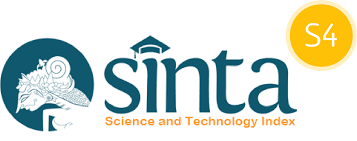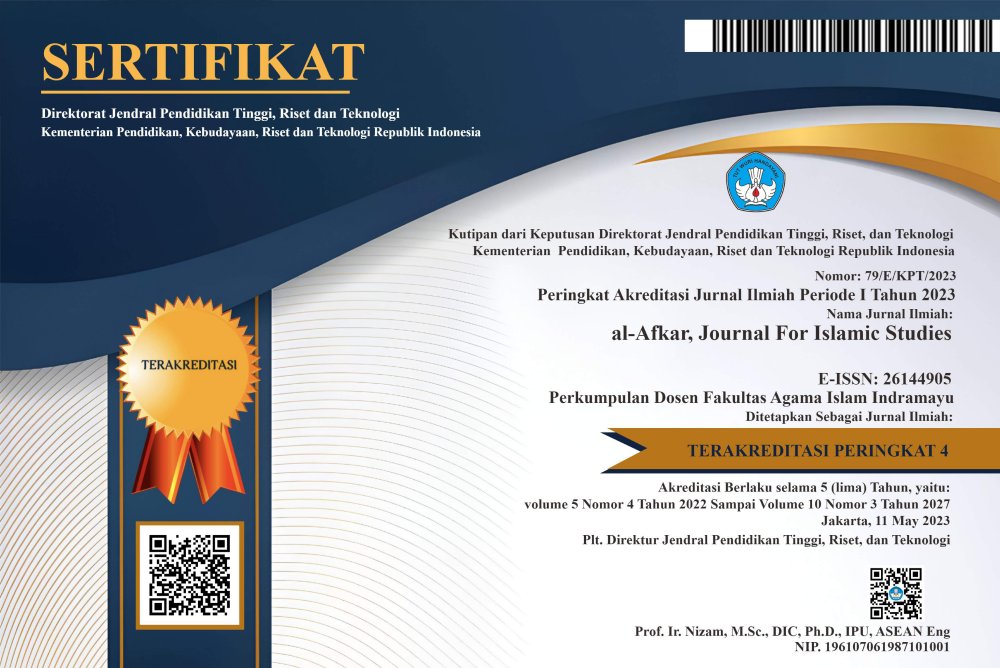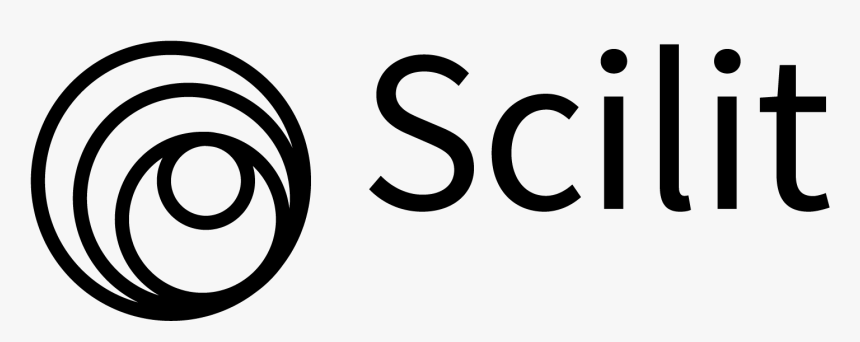The Effect of Using Driil Methods on Increasing the Ability to Read the Al-Qur'an in Class III in Al-Qur'an Hadith Subjects at DTA Nurul Hikmah
DOI:
https://doi.org/10.31943/afkarjournal.v8i1.1342Keywords:
Drill Method, Ability to Read Al-Qu’an\, Al-Qur’an HadithAbstract
This research consists of two variables, namely the drill method and the ability to read the Koran, so the aim of this research is to describe the results of drill method learning, the ability to read the Koran, and the influence of both in a correlational relationship. The population in this study was all class III of DTA Nurul Hikmah Ciasem Subang, and the sample was class III. The research method used in this research is correlational research with a quantitative approach. This method was chosen to identify the relationship between the drill method and the ability to read the Koran. Data related to the experience of the drill method and the ability to read the Koran were collected using a questionnaire instrument, which was prepared using a Likert scale, data analysis techniques used descriptive and inferential analysis. The results of this research show that 13% of Drill Method learning is in the low category, 83% is in the medium category and 4% is in the high category, so it can be concluded that the average of Drill Method Learning in DTA Nurul Hikmah Ciasem Subang is in the medium category. Ability to read the Qur’an, 13% in the low category, 80% in the medium category and 7% in the high category, so it can be concluded that the average ability to read the Qur’an of students in class III DTA Nurul Hikmah is in the medium category. SPSS output in the Coefficientsa table shows a significance value (sig.) of 0.02 < 0.05 so it can be concluded that H0 is rejected and Ha is accepted, which means that “There is an influence of drill method learning (X) on the ability to read the Al-Qur’an (Y).” From the results of the analysis, it is known that the value of R Square = 0.036, thus it can be concluded that the influence of drill method learning (X) on the ability to read the Al-Qur’an (Y) is 3.6% while the ability to read the Al-Qur’an is 96.4%. and is influenced by other variables not studied.
Downloads
References
Alviando Bunga Ayumi dan Ferianto. “Pengaruh Metode Pengajaran Kreatif terhadap Motivasi Belajar Siswa Dalam Pelajaran Matematika SDN Kranji II” : Jurnal of Islamic Studies. Vol. 1, 1 September (2023).
Muri Yusuf. (2015). Metode Penelitian Kuantitatif Kualitatif dan Penelitian Gabungan. Prenadamedia Group
Azmil. (2014). Metodologi Penelitian dan Pendidikan Kuantitatif dan Kualitatif,. Rajawali Press.
Departemen Agama RI, Pedoman Pendidikan Agama Islam Sekolah Umum Dan Luar Biasa, tt, hlm. 2.
Hidayati, N. (2020). Penggunaan Metode Drill Untuk Akhlak Peserta Didik Kelas.
Joni Iskandar, Penerapan Metode Iqro dalam Meningkatkan Kemampuan BacaTulis Al-Qur’an pada Anak di TPO Al-Ihsan Sikep Desa Pendem Kecamatan Janapria Lombok Tengah, (Skripsi, FITK IAIN Mataram,Mataram, 2015), h.19
Peraturan Pemerintah No. 55 Tahun 2007, Tentang Pendidikan Agama dan Pendidikan Keagamaan Bab I, pasal 2, ayat
Ridwan, Pembelajaran Qur’an Hadis di Madrasah Ibtidaiyah, Lombok: Elhikam Press, 2016.
Salamah, U. (2018). Pengajaran Menggunakan Metode Kaisa Dalam Menghafal Al Quran Pada Anak. Journal TA’LIMUNA, 7(2), 124. https://doi.org/10.32478/talimuna.v7i2.186
Sugiyono. (2009). Metode Penelitian Kuantitatif, Kualitatif, dan R&D. Alfabeta
Tambak, S. (2016). Metode Drill dalam Pembelajaran Pendidikan Agama Islam
Zakiyyah Daradjat, Ilmu Jiwa Agama, (Jakarta: Bulan Bintang, 2005), hlm. 124
Downloads
Published
How to Cite
Issue
Section
License
Copyright (c) 2025 Didah Maolida, Jaenal Abidin, Ferianto

This work is licensed under a Creative Commons Attribution 4.0 International License.



















